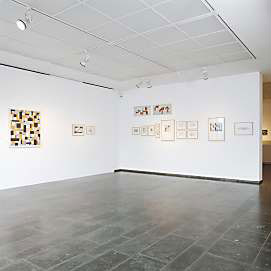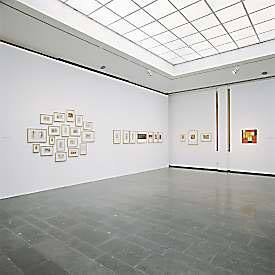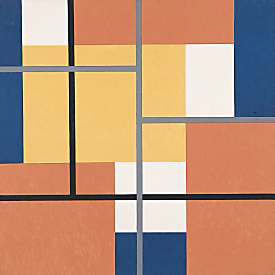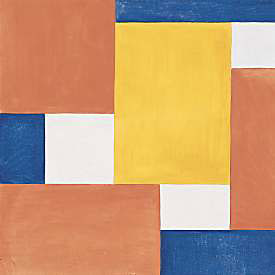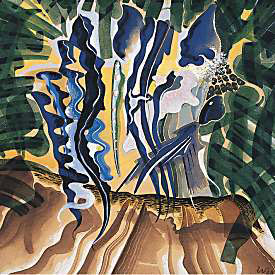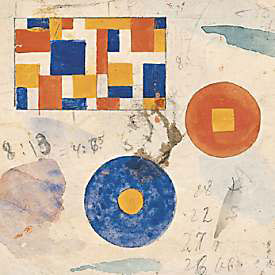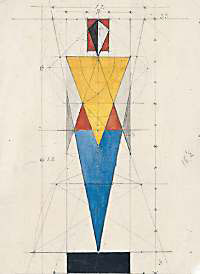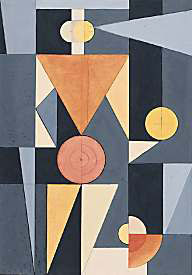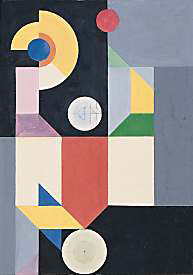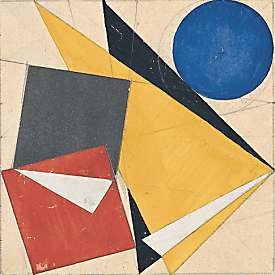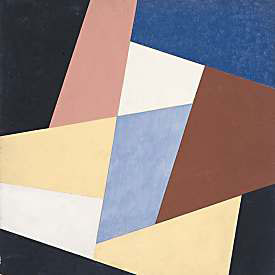1999 Andor Weininger
22 October 1999 to 1 March 2000
Andor Weininger – Weimar ... New York
Reencounter with the Unknown – Part 14
He was no Bauhaus artist but still a master of the Bauhaus. As founder and leader of the Bauhaus group, he was the centre of their celebrations, staying at the school longer than many of its famous teachers. From 1921 on, Hungarian-born Andor Weininger studied in Weimar with Johannes Itten and Wassily Kandinsky and belonged to the circle of those who visited Theo van Doesburg’s private de-Stijl-classes at the same time. In 1925, Walter Gropius asked him to return to the institute which had, in the meantime, moved to Dessau: “All of the Bauhaus members as well as I myself wish that you come back as soon as possible.” With his charm and vitality, Weiniger fulfilled the function as a connecting link between all members of the Bauhaus, shaping definitively the Bauhaus stage led by his friend Oskar Schlemmer. There he met Eva Fernbach, a student who worked in the carpenter’s workshop with Marcel Breuer and later with Josef Albers. In 1928, they moved to Berlin as independent designers, marrying in 1931. With the beginning of the Nazi regime their promising development took a fateful turn. Weininger, as a foreigner, was no longer allowed to accept jobs. He was only able to further work as an artist in secret. In 1938, the couple finally felt forced to immigrate to the Netherlands where they lived under very bad conditions during and immediately after the war. Since he was denied the entry to the US, the couple moved to Toronto in 1951. Only in 1958 were they able to settle down in New York, where Andor Weininger died in 1986. On the occasion of his 100th birthday we are showing for the first time a cross-section of 234 pieces of art which Eva Weininger has donated to the Diözesanmuseum. Our final exhibition in this millennium is dedicated to an oeuvre which because of its permanent questioning of its constructivist beginnings and parallel to a surrealist phase, proves the undisputed relevance of modern times.
(Book publication)
Andor Weininger – Weimar ... New York
Reencounter with the Unknown – Part 14
He was no Bauhaus artist but still a master of the Bauhaus. As founder and leader of the Bauhaus group, he was the centre of their celebrations, staying at the school longer than many of its famous teachers. From 1921 on, Hungarian-born Andor Weininger studied in Weimar with Johannes Itten and Wassily Kandinsky and belonged to the circle of those who visited Theo van Doesburg’s private de-Stijl-classes at the same time. In 1925, Walter Gropius asked him to return to the institute which had, in the meantime, moved to Dessau: “All of the Bauhaus members as well as I myself wish that you come back as soon as possible.” With his charm and vitality, Weiniger fulfilled the function as a connecting link between all members of the Bauhaus, shaping definitively the Bauhaus stage led by his friend Oskar Schlemmer. There he met Eva Fernbach, a student who worked in the carpenter’s workshop with Marcel Breuer and later with Josef Albers. In 1928, they moved to Berlin as independent designers, marrying in 1931. With the beginning of the Nazi regime their promising development took a fateful turn. Weininger, as a foreigner, was no longer allowed to accept jobs. He was only able to further work as an artist in secret. In 1938, the couple finally felt forced to immigrate to the Netherlands where they lived under very bad conditions during and immediately after the war. Since he was denied the entry to the US, the couple moved to Toronto in 1951. Only in 1958 were they able to settle down in New York, where Andor Weininger died in 1986. On the occasion of his 100th birthday we are showing for the first time a cross-section of 234 pieces of art which Eva Weininger has donated to the Diözesanmuseum. Our final exhibition in this millennium is dedicated to an oeuvre which because of its permanent questioning of its constructivist beginnings and parallel to a surrealist phase, proves the undisputed relevance of modern times.
(Book publication)
